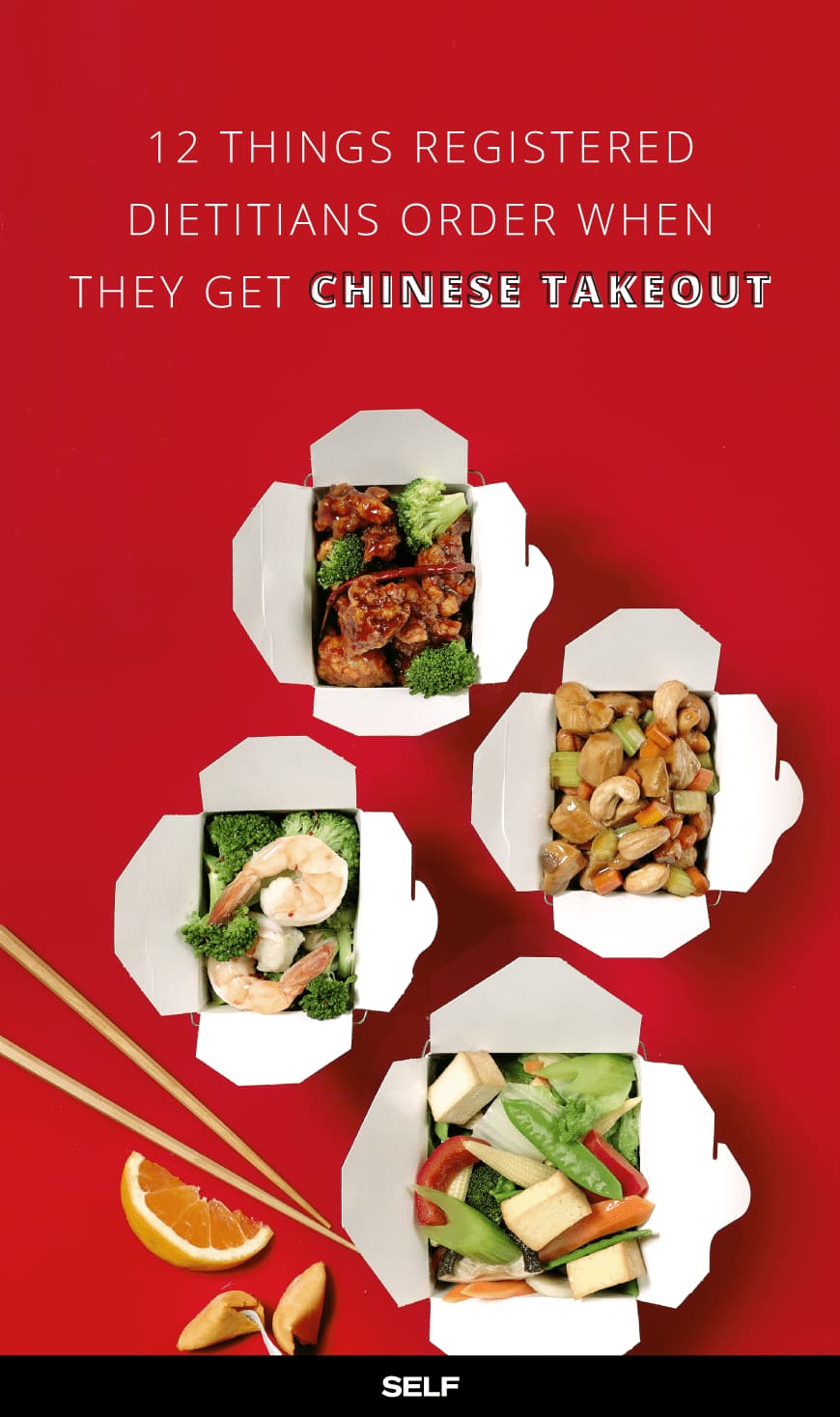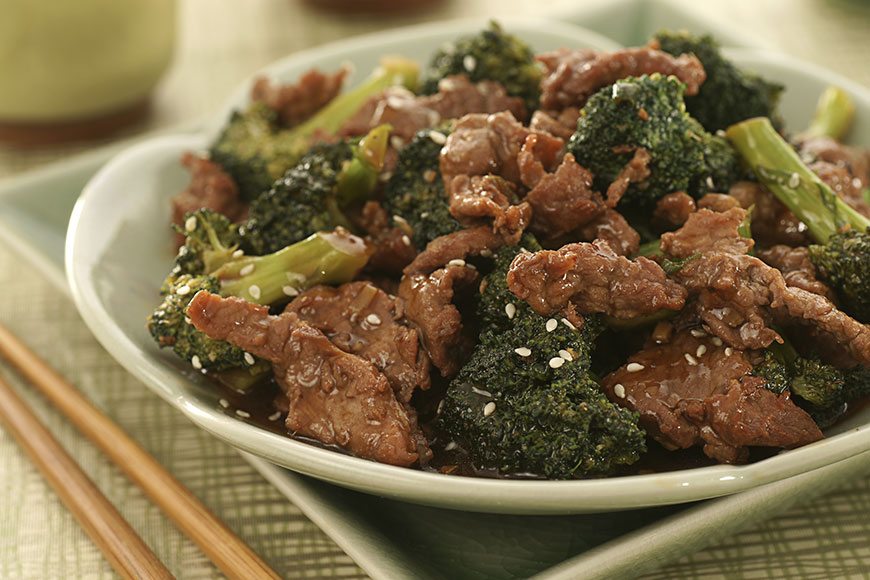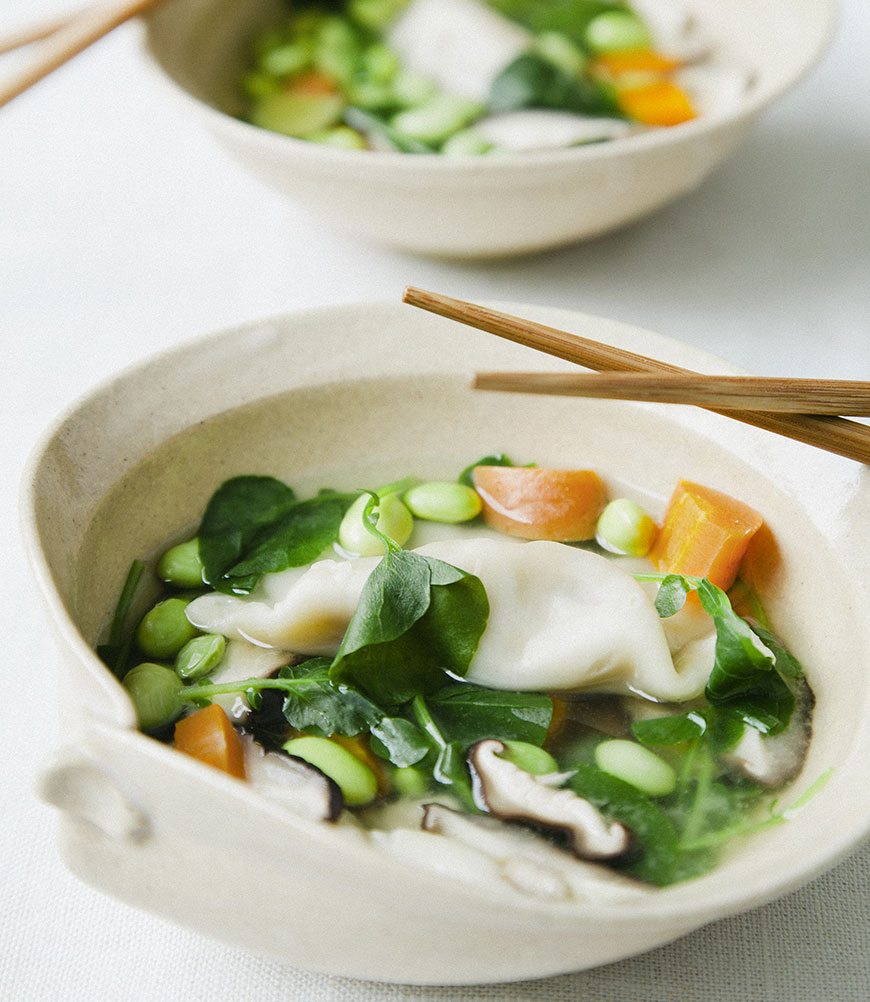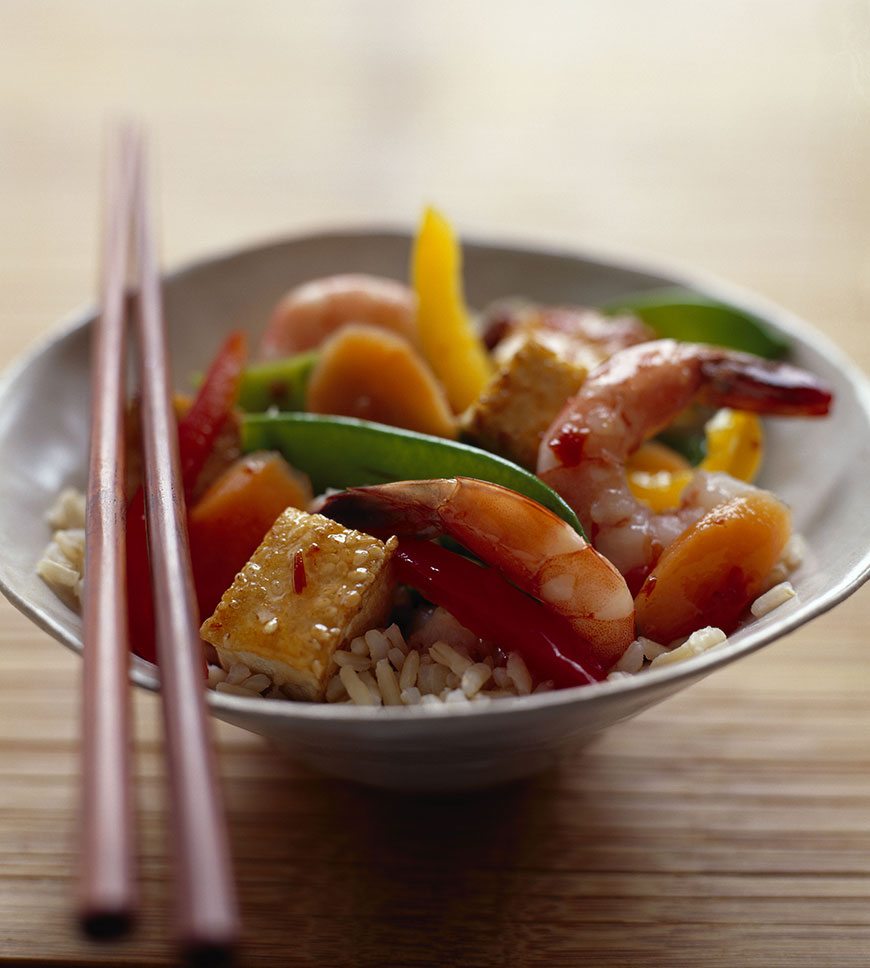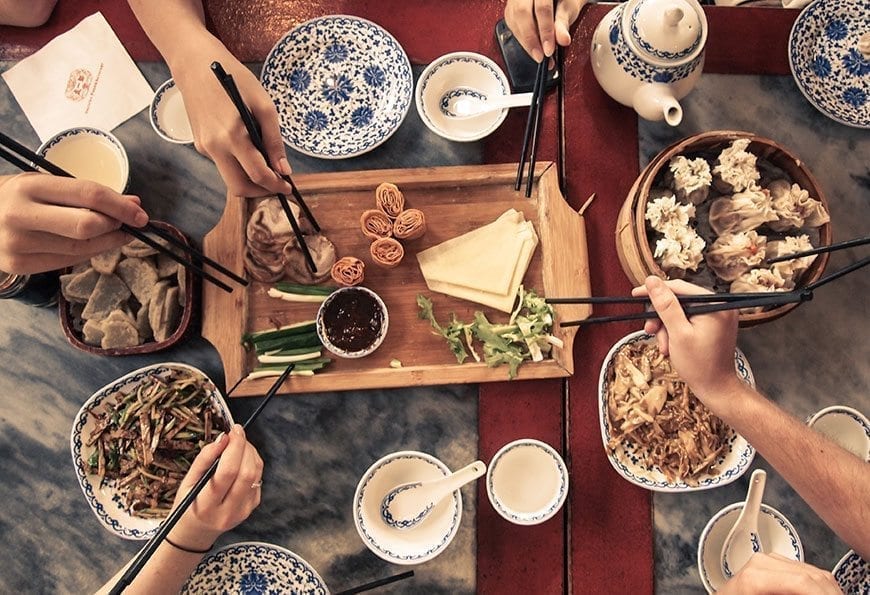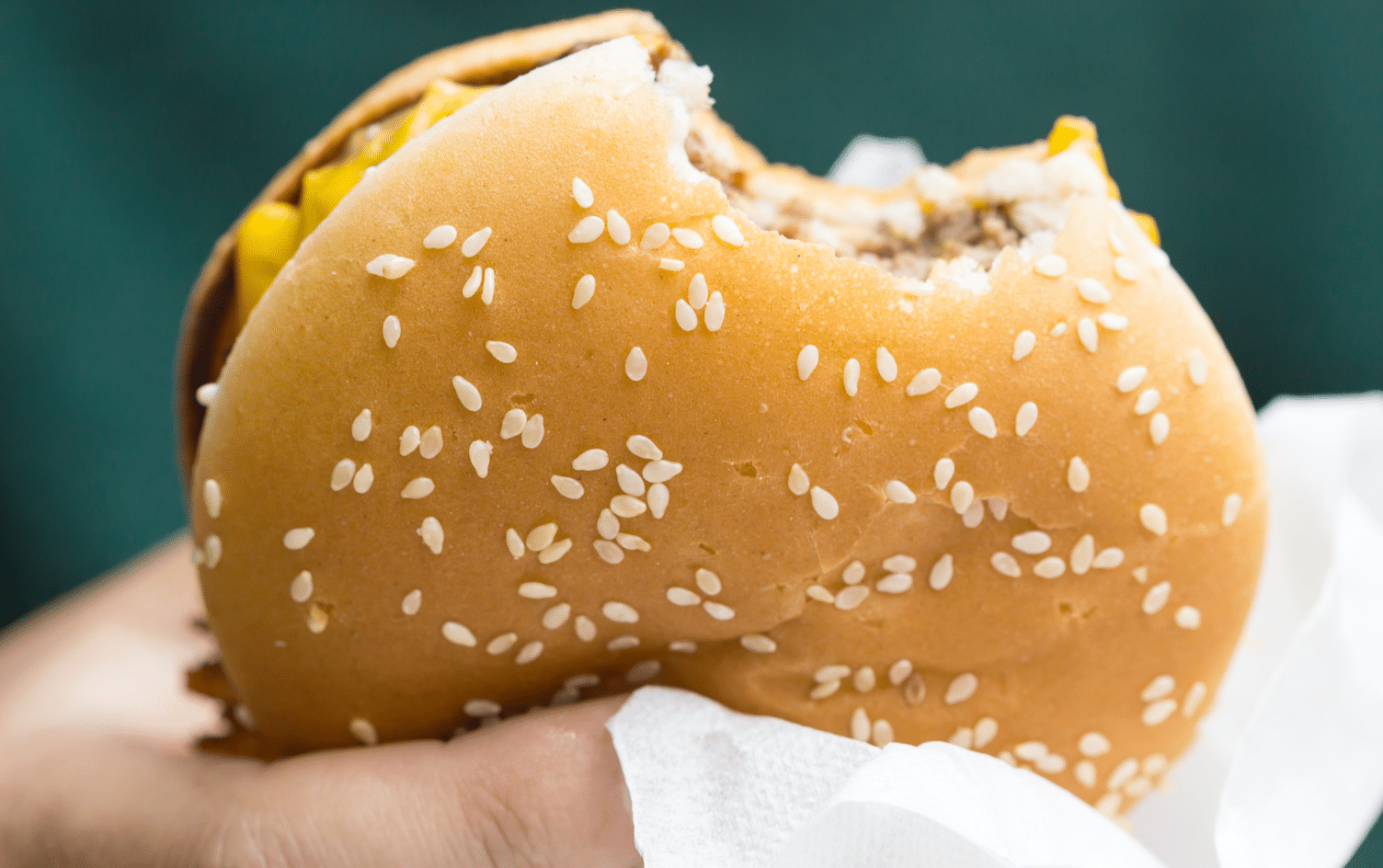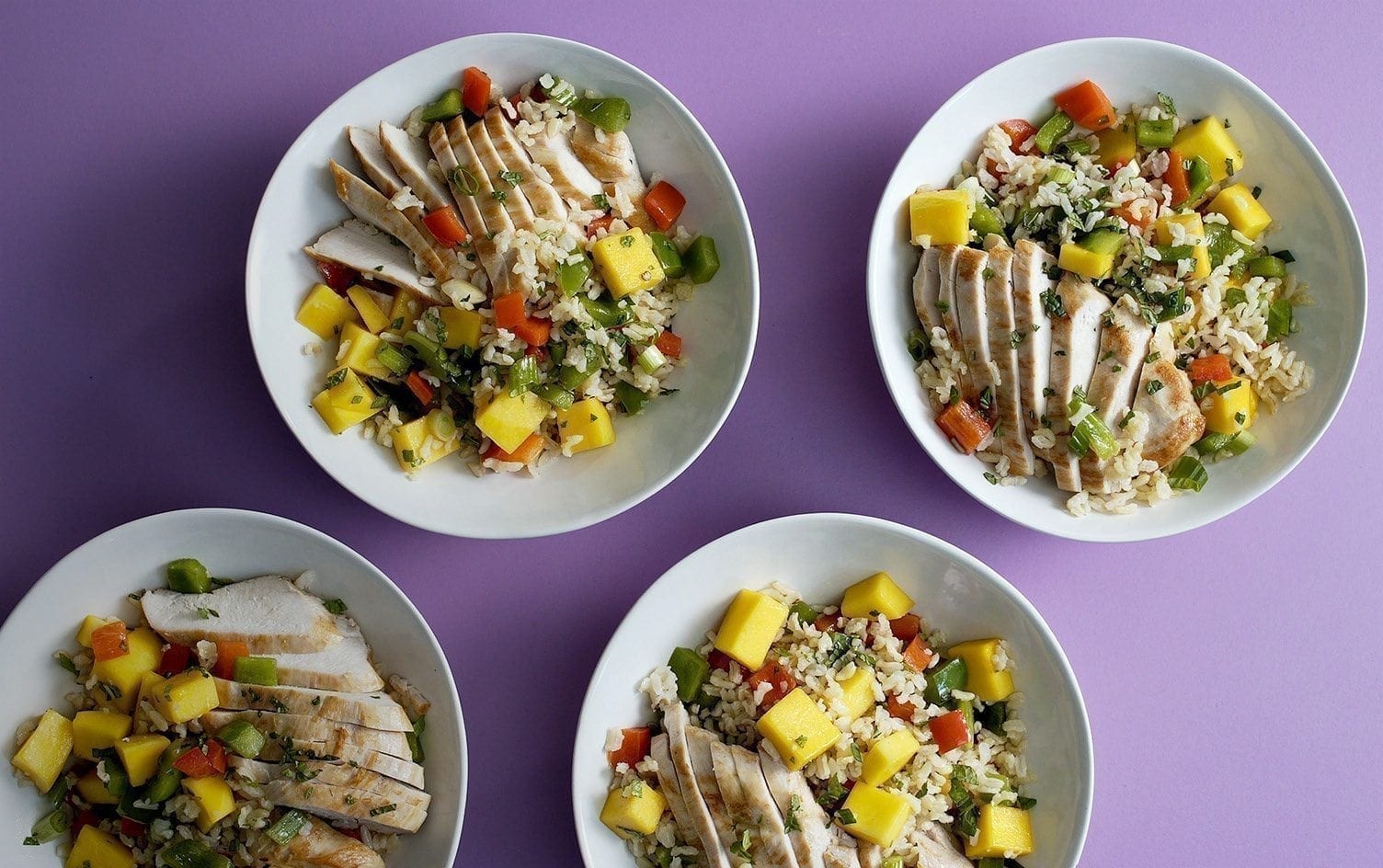Takeout food may be notorious for its high-cal, sodium-filled fare, but not all options are created equal. It is possible to enjoy a convenient meal without blowing your healthy eating routine—a lot of it has to do with portion control, but what you order matters, too. And while there’s nothing wrong with splurging on your favorite dish  every so often, explains Patricia Bannan, M.S., R.D., “filling up on the healthy stuff leaves less room for indulgent eats.”
every so often, explains Patricia Bannan, M.S., R.D., “filling up on the healthy stuff leaves less room for indulgent eats.”
So what exactly does a registered dietitian order from her go-to Chinese takeout spot? Consider these expert-loved dishes a look inside their takeout bags.
1. Beef And Broccoli
This classic dish gets a thumbs-up for its filling power. “I like beef and broccoli with brown rice,” says Rebecca Scritchfield, R.D. “You don’t need too much beef to feel full.” Chicken and broccoli is a good option, too.
2. Mixed Vegetables
You’re probably not surprised that vegetables made the list. Bannan recommends ordering steamed (or even lightly stir-fried) veggies on the side—the more, the better. (Sorry, but tempura doesn’t count here.) Or, “ask for extra broccoli, carrots, or snow peas in any dish. These are three veggies that Asian restaurants typically have on hand,” adds Sarah-Jane Bedwell, R.D., L.D.N.—this tactic is one of her faves for filling up her plate.
3. Steamed Dishes
“I usually ask for my dish steamed with the sauce on the side,” says Scritchfield. “Steamed helps to reduce the oil in the dish, making it lighter in calories and possibly a bit easier to digest. You can get most any dish steamed.” This works for veggies, lean protein, rice, you name it.
4. Starter Soup
Eating a broth-based soup first can help you eat less later on, explains Alissa Rumsey, R.D. She prefers hot and sour soup, while Bedwell goes for wonton. Keri Gans, R.D., always orders egg drop soup. “A one cup serving is only 66 calories, so even though your serving from a restaurant is larger, the calories are still in check. It also provides around three grams of protein and one gram of fiber per one cup serving.” Granted, it’s high in sodium, something to keep in mind if you’re trying to watch your intake.
5. Moo Goo Gai Pan
Entrees that come with plenty of veg are always good options, says Rumsey. “Moo Goo Gai Pan typically consists of stir-fried chicken with mushrooms and other vegetables, providing a balanced meal with just a light sauce. It comes with a lot of vegetables, so they are the main part of the meal, not just an afterthought.” This is a favorite of Bedwell’s, too: “It’s flavorful and lean with chicken, mushrooms, and other mixed veggies and is not as high in sugars and fats as many other dishes.”
6. Chinese Eggplant With Garlic Sauce
“I like Chinese eggplant in spicy garlic sauce because it’s all vegetable! In addition to the eggplant, it usually comes with broccoli too,” says Scritchfield.
7. Steamed Dumplings
“If you want an appetizer, [go for] a vegetable dumpling that is steamed and not fried,” says Gans. You might also recognize these as potstickers—either way, they get top marks when they haven’t been fried in oil and they’re filled with veggies.
8. Brown Rice With A Scrambled Egg
Scritchfield has a simple, healthier swap for fried rice: order brown rice and ask for a scrambled egg on the side. “Most takeouts have eggs for the fried rice, and they are willing to do this for you,” she explains. “Brown rice has a lower glycemic index as compared to white rice, which helps reduce insulin spikes.”
9. Shrimp Entrées
While Gans herself typically prefers broccoli and garlic sauce, “If it is a higher-end restaurant I might opt for some shrimp,” she says. Bedwell adds that steamed shrimp is a great way too add lean protein to your meal—if you’re a vegetarian, she recommends grilled tofu instead.
10. Kung Pao Chicken
Bring on the spice. “Order Kung Pao chicken instead [of sweet-and-sour chicken, sesame chicken, and General Tso’s chicken],” says Bedwell. “It comes with abundant vegetables, sans the fried chicken!”
11. Buddha’s Delight
“If I want to do a vegetarian meal, I’ll go for Buddah’s Delight since it is a flavorful dish that is primarily steamed veggies with a little tofu for protein,” says Bedwell. This is a personal favorite of Rumsey’s, too.
12. And ask for your sauce on the side.
“By getting it on the side you can better control the amount you eat. Often I take two or three tablespoons of the original sauce and mix it with low-sodium soy sauce,” says Rumsey. “For comparison, one tablespoon of low-sodium soy sauce has 22 percent of your days’ worth of sodium and one tablespoon of regular soy sauce has about 38 percent of your days’ worth of sodium,” adds Bannan.
Consider this list your takeout cheat sheet.
—By Alexa Tucker
Photos courtesy of SELF.
